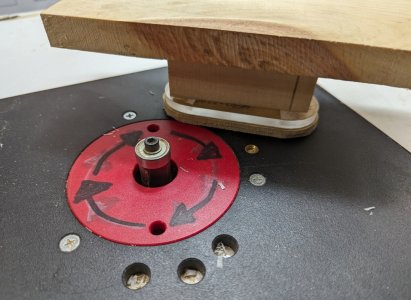blakejcan
Well-known member
Making my first set neck using this template set:
https://reverb.com/item/29764961-gi...4-55-56-57-jr-1-2-mdf-guitar-router-templates
Body looks perfect.
Neck is coming along great. Headstock, truss rod, rough cut body shape all done. About to add the fretboard.
I just can't quite figure out two things:
1. how long should the total neck dimension be?
2. how are you supposed to shape the heel?
The template has some dimensions for shaping the body but nothing for the neck.
I guess I could use the neck pocket template from the body as a guide for shaping the neck. And I plan to build the proper neck angle into the heel of the neck itself, not the neck pocket.
But how long should it be from behind the fingerboard to the heel? Some online pics show it pretty long? Others show it as like tiny stump?
https://reverb.com/item/29764961-gi...4-55-56-57-jr-1-2-mdf-guitar-router-templates
Body looks perfect.
Neck is coming along great. Headstock, truss rod, rough cut body shape all done. About to add the fretboard.
I just can't quite figure out two things:
1. how long should the total neck dimension be?
2. how are you supposed to shape the heel?
The template has some dimensions for shaping the body but nothing for the neck.
I guess I could use the neck pocket template from the body as a guide for shaping the neck. And I plan to build the proper neck angle into the heel of the neck itself, not the neck pocket.
But how long should it be from behind the fingerboard to the heel? Some online pics show it pretty long? Others show it as like tiny stump?

